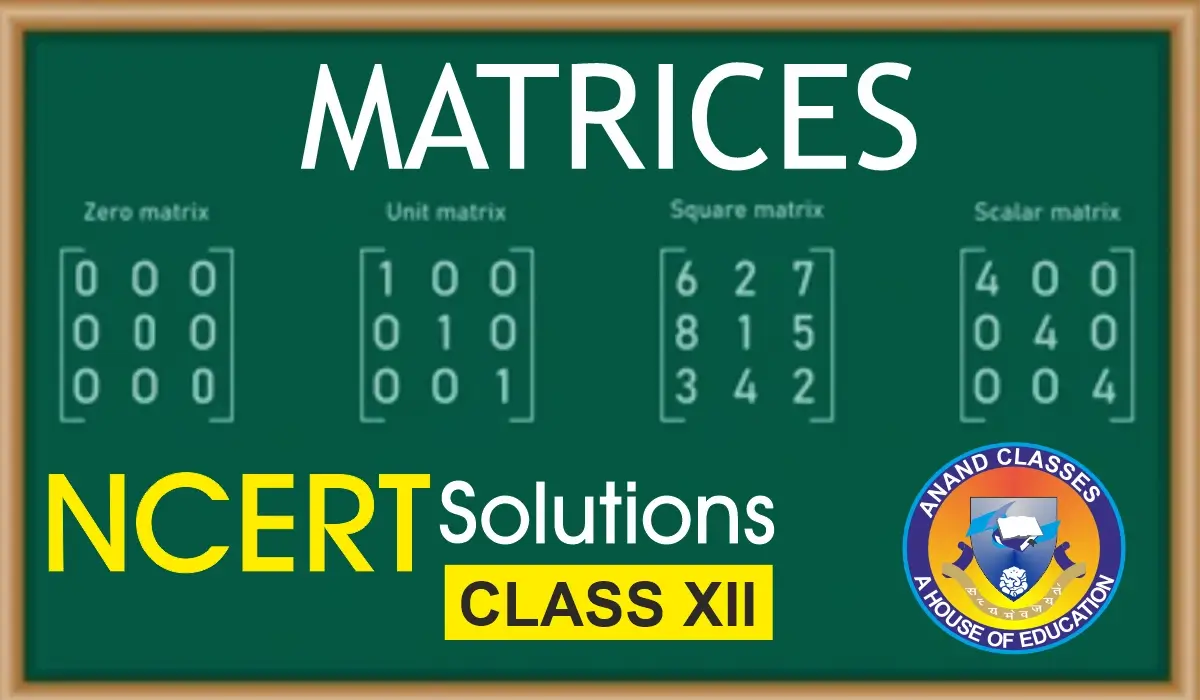Anand Classes brings you detailed notes on Periodic Trends and Chemical Reactivity with clear explanations of metallic and non-metallic character, ionization enthalpy, electron gain enthalpy, and electronegativity. These well-structured notes are designed for JEE, NEET, and CBSE Class 11 students to strengthen their conceptual understanding and improve exam performance. Click the print button to download study material and notes.
Periodic Trends and Chemical Reactivity
We have studied the periodic trends in some fundamental properties such as atomic and ionic radii, ionization enthalpy, electron gain enthalpy, electronegativity, and valence. These periodic trends are directly related to the electronic configuration of elements. Since the chemical and physical properties of elements and their compounds are a manifestation of their electronic configuration, the chemical reactivity of elements is also governed by these fundamental properties.
Trends Across a Period
- Atomic and ionic radii generally decrease across a period (left to right).
- As a result:
- Ionization enthalpy increases (with some exceptions).
- Electron gain enthalpy becomes more negative.
👉 Thus:
- The element on the extreme left of a period has the least ionization enthalpy → strongest tendency to lose electrons.
- The element on the extreme right (except noble gases) has the most negative electron gain enthalpy → strongest tendency to gain electrons.
- Noble gases are exceptions, as they have completely filled shells. Their electron gain enthalpy is positive, making them least reactive.
➡️ Therefore, the maximum chemical reactivity occurs at both extremes of a period, while the minimum reactivity lies in the center.
- Alkali metals (Group 1) → highly reactive due to easy loss of electrons (form cations).
- Halogens (Group 17) → highly reactive due to easy gain of electrons (form anions).
This tendency is directly related to:
- Reducing behavior: Elements that readily lose electrons are strong reducing agents (alkali metals).
- Oxidizing behavior: Elements that readily gain electrons are strong oxidizing agents (halogens).
Metallic and Non-Metallic Character Across a Period
- Metals → Strong tendency to lose electrons.
- Non-metals → Strong tendency to gain electrons.
👉 Hence:
- Metallic character is highest on the extreme left and decreases towards the right.
- Non-metallic character is highest on the extreme right and increases across the period.
Examples:
- Period 2: Li (strongest metal), F (strongest non-metal).
- Period 3: Na, Mg, Al (metals), Si (metalloid), S, Cl (non-metals).
Reactivity with Oxygen and Halogens
The reactivity of elements can be observed from the nature of their oxides and halides.
- Metals (left side): React with oxygen to form basic oxides.
- Non-metals (right side): React with oxygen to form acidic oxides.
- Metalloids (center): Form amphoteric oxides (e.g., Al₂O₃) or neutral oxides (e.g., CO, NO).
👉 Trend across a period:
- Basic character of oxides decreases.
- Acidic character of oxides increases.
Example (3rd period oxides):
$$Na₂O \ (\text{strongly basic}) \; → \; MgO \ (\text{less basic}) \; → \; Al₂O₃ \ (\text{amphoteric}) \; → \; SiO₂ \ (\text{weakly acidic}) \; → \; P₂O₅ \ (\text{acidic}) \; → \; SO₃ \ (\text{strongly acidic}) \; → \; Cl₂O₇ \ (\text{very strongly acidic})$$
| Element | Na | Mg | Al | Si | P | S | Cl |
|---|---|---|---|---|---|---|---|
| Oxide | Na₂O | MgO | Al₂O₃ | SiO₂ | P₂O₅ | SO₃ | Cl₂O₇ |
| Nature | Strongly Basic | Basic | Amphoteric | Weakly Acidic | Acidic | Strongly Acidic | Very Strongly Acidic |
Trends in Transition and Inner Transition Elements
- In transition elements (3d series):
- The change in atomic radii across a period is much smaller compared to s- and p-block elements.
- Their ionization enthalpies are intermediate between s- and p-block elements.
- Hence, they are less electropositive than alkali and alkaline earth metals.
- In inner transition elements (4f series):
- The decrease in radii is even smaller (lanthanide contraction).
Trends Down a Group
- Atomic and ionic radii increase down a group.
- As a result:
- Ionization enthalpy decreases.
- Electron gain enthalpy becomes less negative (with some exceptions).
- Metallic character increases and non-metallic character decreases down the group.
Example (Group 14):
- Carbon → typical non-metal
- Si, Ge → metalloids
- Sn, Pb → typical metals
✨ Thus, chemical reactivity, metallic/non-metallic nature, and the acidic/basic behavior of oxides are all directly linked to periodic trends in atomic size, ionization enthalpy, and electron gain enthalpy.
FAQs on Periodic Trends and Chemical Reactivity
Q1. Why does chemical reactivity depend on periodic properties?
Answer:
Because periodic properties such as atomic radius, ionization enthalpy, electron gain enthalpy, and electronegativity are determined by electronic configuration. Since reactivity is the manifestation of electron loss or gain, it directly depends on these properties.
Q2. Why are alkali metals highly reactive?
Answer:
Alkali metals (Group 1) have:
- Lowest ionization enthalpy in their respective periods.
- Large atomic size and weak nuclear attraction on the outer electron.
👉 Hence, they easily lose one electron to form M⁺ ions, making them strong reducing agents.
Q3. Why are halogens highly reactive non-metals?
Answer:
Halogens (Group 17) have:
- High electronegativity.
- Most negative electron gain enthalpy (except F, slightly less negative due to repulsion).
👉 They readily gain one electron to form X⁻ ions, making them strong oxidizing agents.
Q4. Why are noble gases least reactive?
Answer:
Noble gases have completely filled electronic shells and very high ionization enthalpy. Their electron gain enthalpy values are positive, so they neither lose nor gain electrons easily.
Q5. How does metallic character vary across a period?
Answer:
- Decreases from left to right across a period, since ionization enthalpy increases.
- Alkali metals are the most metallic in a period, while halogens are the least metallic.
Q6. How does non-metallic character vary across a period?
Answer:
- Increases from left to right, because electron gain enthalpy becomes more negative.
- Example: In Period 2, Li (metal) → Be, B (metalloids) → C, N, O, F (non-metals).
Q7. What is the nature of oxides across a period?
Answer:
- Basic oxides → Left side (alkali & alkaline earth metals).
- Amphoteric oxides → Middle (metalloids like Al₂O₃).
- Acidic oxides → Right side (non-metals like SO₃, Cl₂O₇).
👉 Basic character decreases, acidic character increases from left to right.
Q8. Why does metallic character increase down a group?
Answer:
- Atomic radius increases → outer electrons are less tightly held.
- Ionization enthalpy decreases → easier to lose electrons.
👉 Hence, metallic character increases and non-metallic character decreases down a group.
Q9. Why are transition metals less electropositive than alkali metals?
Answer:
Transition metals have:
- Smaller changes in atomic radii across a series.
- Higher ionization enthalpies than alkali metals.
👉 Thus, they are less electropositive and less reactive than Group 1 and 2 metals.
Q10. Which oxide is the most basic and which is the most acidic in the 3rd period?
Answer:
- Most basic oxide: Na₂O (alkali metal).
- Most acidic oxide: Cl₂O₇ (halogen).
- Oxides of elements in the middle (e.g., Al₂O₃) are amphoteric.
📚 Buy Study Material & Join Our Coaching
For premium study materials specially designed for JEE, NEET, NDA, and CBSE/ICSE Classes, visit our official study material portal:
👉 https://publishers.anandclasses.co.in/
To enroll in our offline or online coaching programs, visit our coaching center website:
👉 https://anandclasses.co.in/
📞 Call us directly at: +91-94631-38669
💬 WhatsApp Us Instantly
Need quick assistance or want to inquire about classes and materials?
📲 Click below to chat instantly on WhatsApp:
👉 Chat on WhatsApp
🎥 Watch Video Lectures
Get access to high-quality video lessons, concept explainers, and revision tips by subscribing to our official YouTube channel:
👉 Neeraj Anand Classes – YouTube Channel


